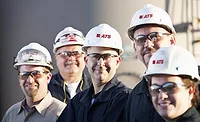Editor's Note
How robotics and skilled labor are shaping the future of manufacturing
Manufacturing continues to evolve, and how food makers repsond will shape the future

The future of manufacturing is top of mind right now, not just in trade publications, but in mainstream media, too. However, there has been a bit of a tonal shift.
In the past, when the press covered the loss of manufacturing jobs, it usually was presented as an isolated fact. That has started to change with the last presidential election and its focus on the effects of losing the manufacturing base, not just in terms of economics, but how it’s made some Americans question the way they define themselves and the country.
Recently, MIT labor economist David Autor dispensed some disturbing labor numbers in an interview with Freakonomics Radio. He said between 2000 and 2007 the US lost more than a million manufacturing jobs, which might not be the total number since some of those laid off possibly gained employment elsewhere. The loss experienced in this time period, however, does coincide with China joining the World Trade Organization in 2001.
What was more devastating, he said, was that the huge numbers of layoffs happened in concentrated areas. So it wasn’t that 10,000 jobs disappeared across thousands of US counties, instead 10,000 jobs might have vanished in one community. That kind of labor bleeding has a rippling, destructive effect to other parts of the local economy, such as restaurants and specialty shops shuttering because of a lack of disposable income in people’s pockets or families relocating entirely. In the wake, these towns stand as shells of what they once were and prompt passersby to wonder what happened. Now we’re finding out.
Automation is often blamed for job losses in manufacturing. In fact, a state economic development person recently asked me why I was pro-automation since “it’s taking away jobs.” My answer to her then is the same now and is based on what I’ve seen and heard from plant managers. There is high turnover in many plants, especially meat and poultry processing facilities, and part of the reason managers hear is people don’t want those jobs. So isn’t it better to allow robotics to help with those tasks?
Usually, the next thing out of plant managers’ mouths is their inability to find highly skilled workers who understand how to operate and maintain advanced machinery. It’s not clear yet if manufacturing will come back to the levels where it once was in the US, but it’s a sure bet it’ll look different than it did 20 or 30 years ago. That is something we all should be preparing for.
Looking for a reprint of this article?
From high-res PDFs to custom plaques, order your copy today!





